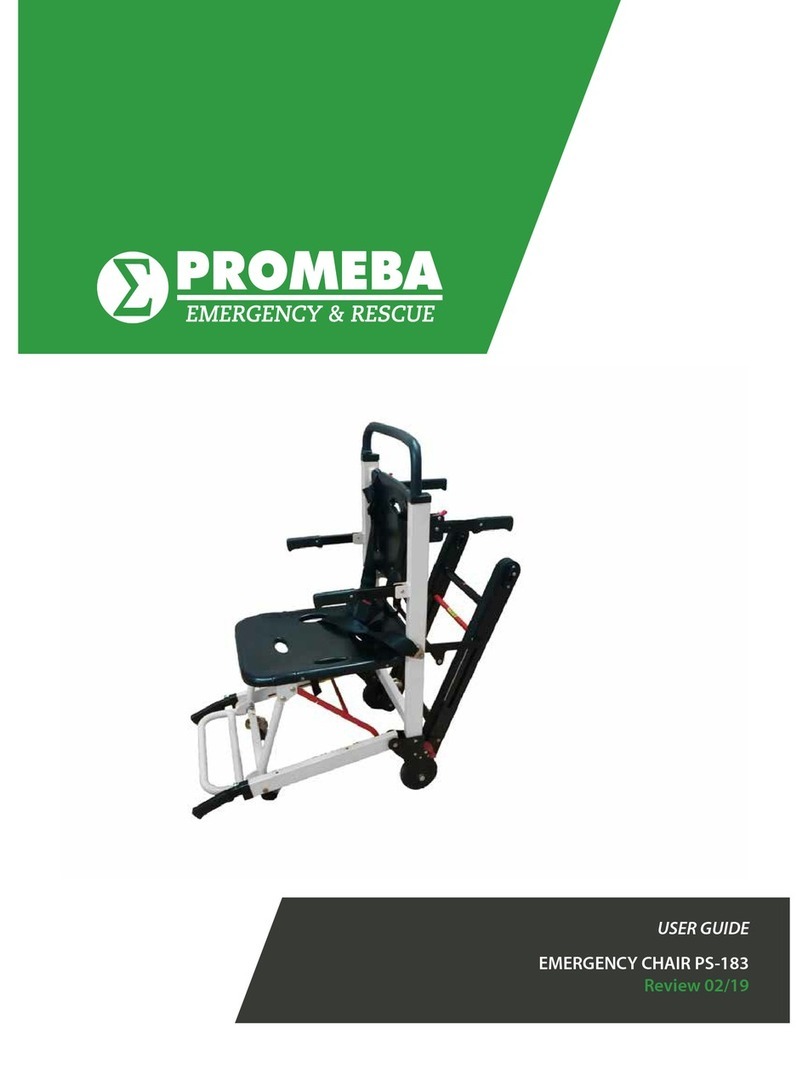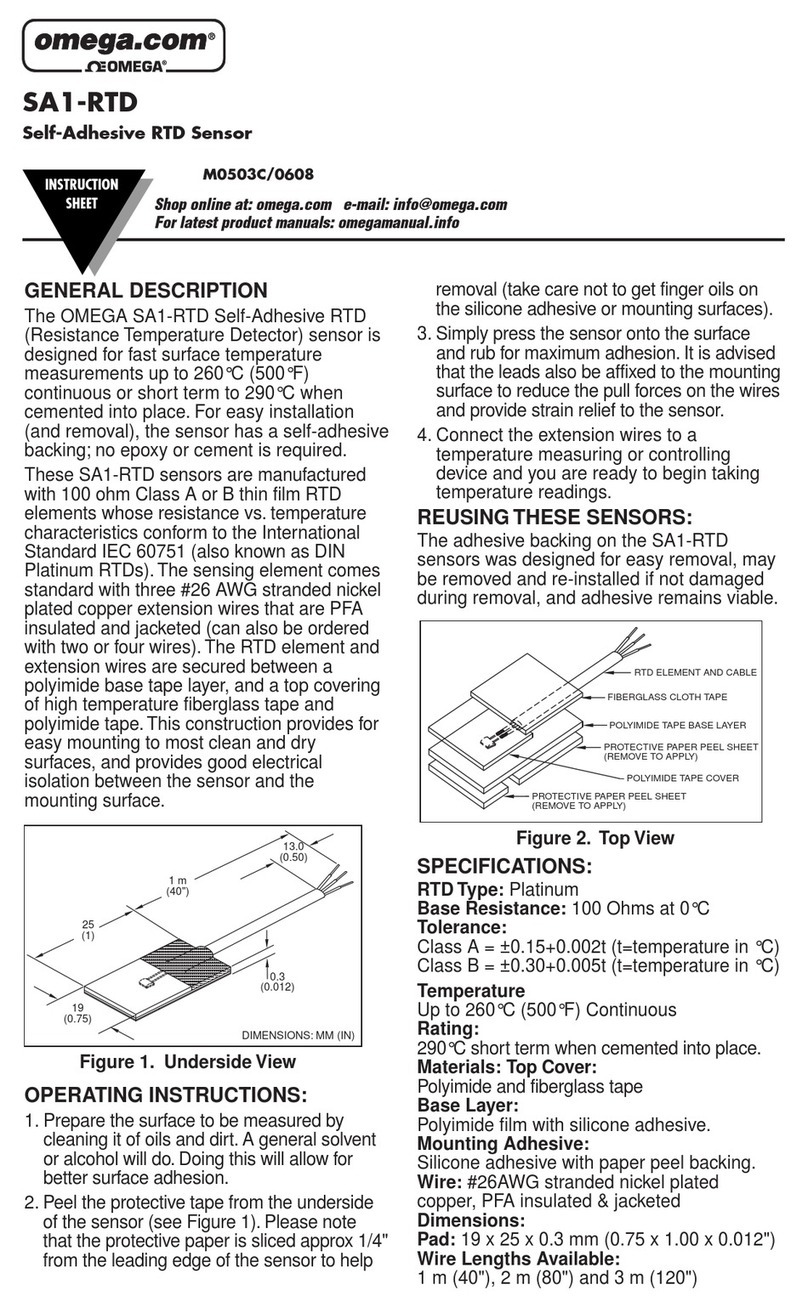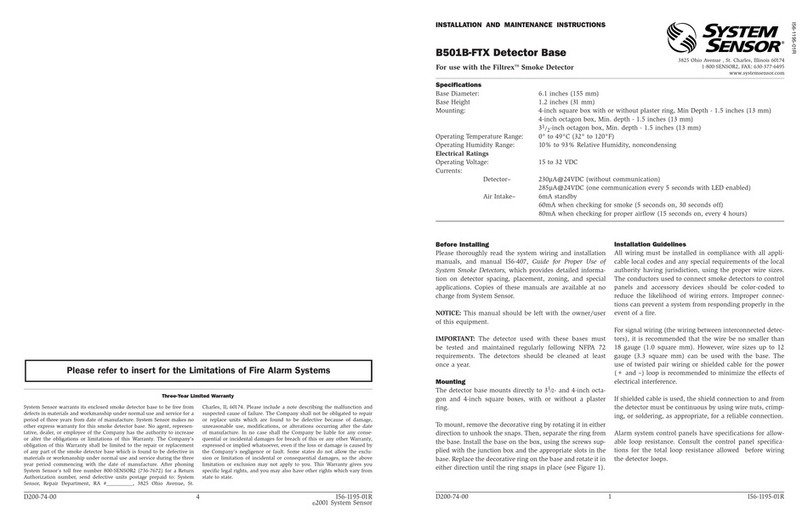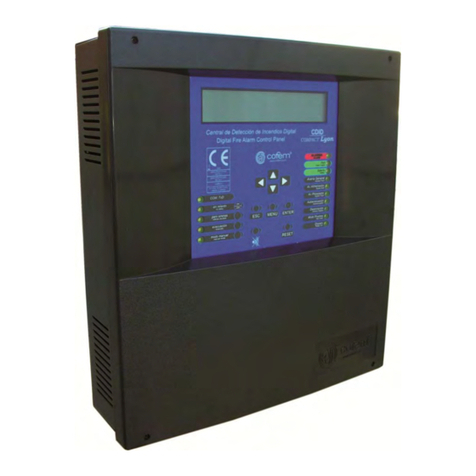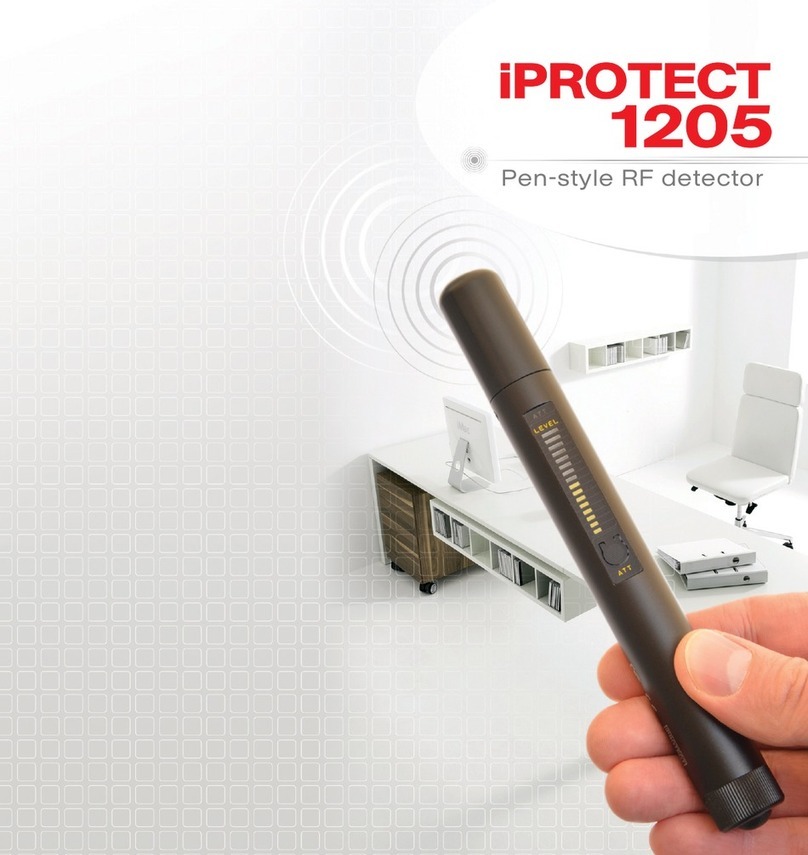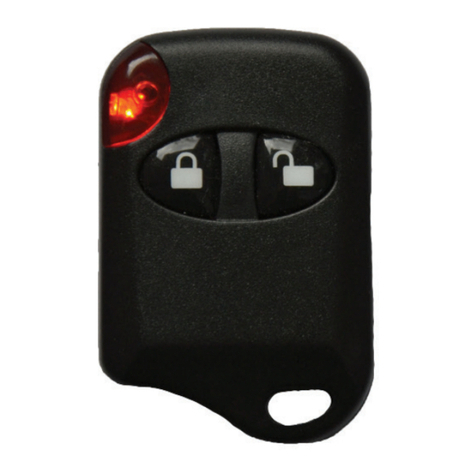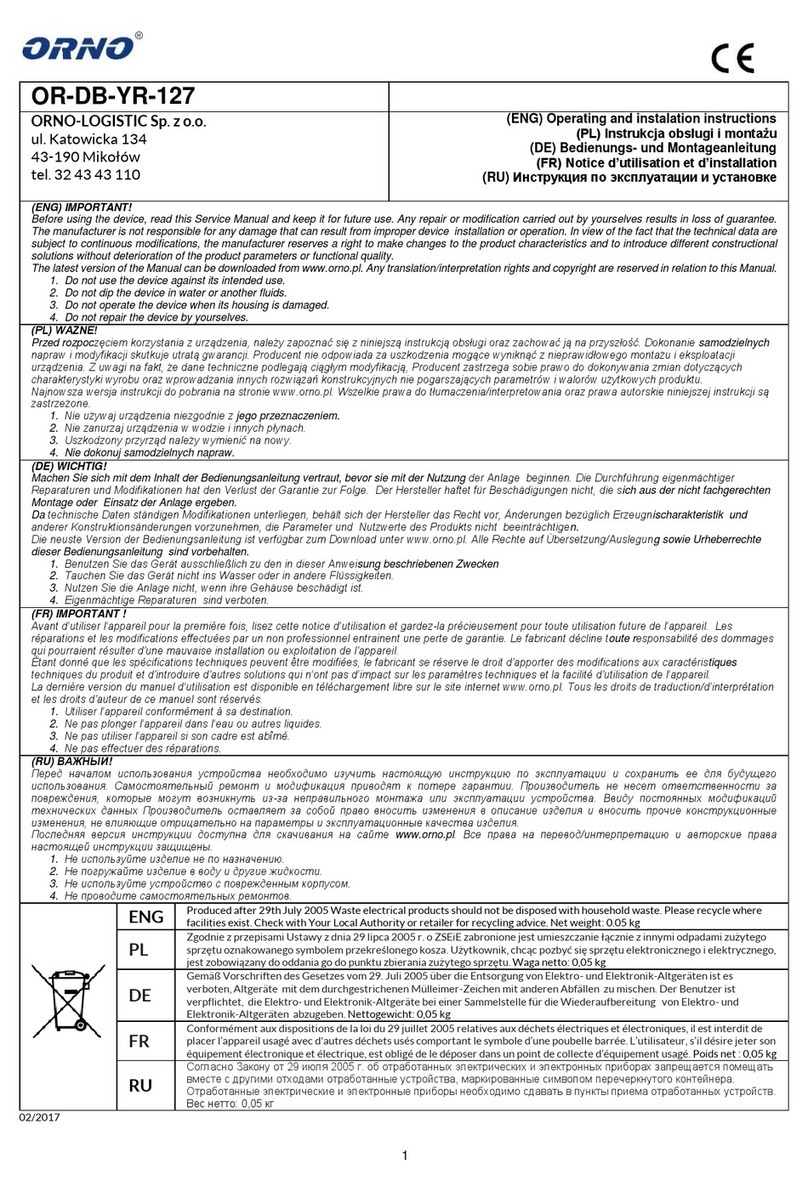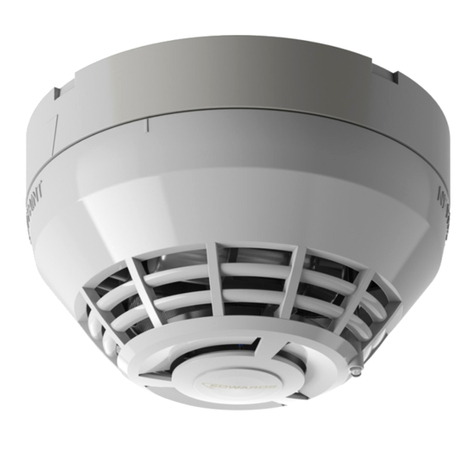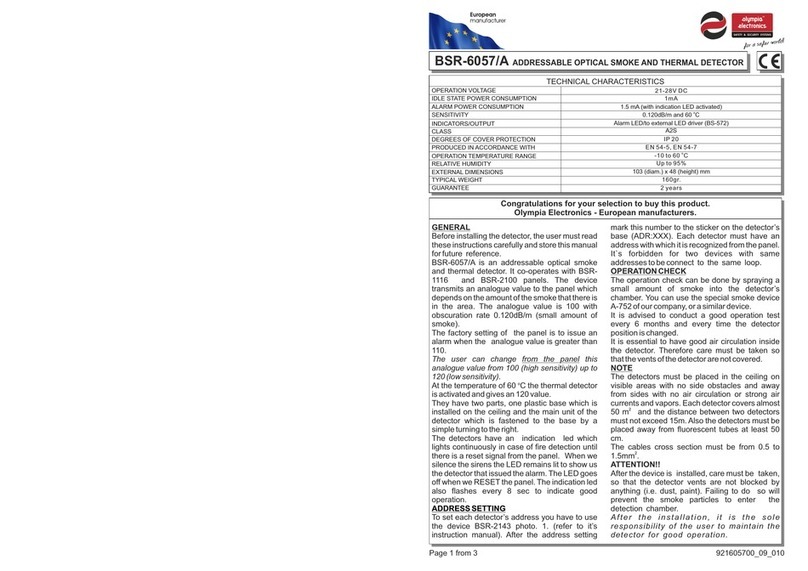ektor EV-MERCURY-III-40M User manual

1. WELCOME
CONTENTS
CODE: 03140
Thank you for choosing this quality Ektor product.
This manual is intended to help you install this
product in a way that ensures the safety of yourself
and others. Whilst this Ektor product is designed
to be installed easily, we highly recommend you
take the time to read this manual thoroughly before
commencing installation. When installed correctly
and serviced regularly, this product will provide
hassle free operation for many years.
1
1. Welcome
2. Overview
3. Safety warnings
4. Installation
5. Mounting options
6. Terminal block wiring
7. Maintaining your Mercury III Jumbo
8. Replacing the battery
9. Battery life
10. Power and battery charge
11. Wireless daughterboard
12. Self test / standard wiring / central battery system
13. DALI wiring / central battery system
14. Using the inverter with a switch
15. Using the inverter with a sensor
16. Accessories list
17. Non maintained / maintained jumper
18. Discharge rating selection
19. Self test indicator LEDs
20. Self test / commissioning interval programming
21. Product specifications
22. Spacing table
23. Australian emergency classification
24. Construction sites
25. Testing precautions
26. Problem solving procedure
27. Warranty information
28. Compliance standards
29. Technical support and troubleshooting
MANUFACTURED
TO ISO9001
Installation Instructions
03140 EV-MERCURY-III-40M

MERCURY III JUMBO INSTALLATION INSTRUCTIONS
2
2. OVERVIEW
Ektor Generation III platform introduces you to a new era of emergency lighting control. With years in the
making, the third generation platform builds on the Ektor product ranges’ increasing quality, reliability and
performance. In choosing this Ektor product you can be comfortable that you have the best.
This product out of the box can be wired in any of these configurations:
• Self testing unit
• Standalone unit
• Standalone unit controlled with a switch or sensor
• DALI controlled remote testing unit
And can be used with a central battery system (monitored and non-monitored).
An optional wireless module can be added to allow you to connect to standard Wi-Fi networks for remote
testing and reporting.
Our Ektor Generation III platform also brings class leading technology which increases performance and
reliability including:
• Smart battery charging technology which reduces power consumption up to 90% while
increasing the service life of the battery
• Smart battery conditioning to ensure the best performance from the battery
• 450V Electrolytic capacitors which increase the products reliability
• Highly efficient design to reduce fatigue on the product
For buildings requiring longer durations such as 3, 4 and 8 hours the installer can change the jumpers found
on the unit for automatic scaling of the output. Moreover should you require non-maintained or maintained
output, the installer can select this on installation.
3. SAFETY WARNING
1. THIS PRODUCT MUST ONLY BE INSTALLED BY A LICENSED ELECTRICIAN.
2. BEFORE COMMENCING INSTALLATION TURN OFF AND ISOLATE THE ELECTRICAL SUPPLY.
3. RISK OF ACCIDENTAL CONTACT WITH LIVE PARTS. DO NOT ENERGISE WITH PRODUCT OPEN OR DISASSEMBLED.
4. SUPPLY VOLTAGES WITHIN PRODUCT. ISOLATE SUPPLY VOLTAGES BEFORE OPENING OR SERVICING.
5. THIS LUMINAIRE IS SUITABLE FOR USE IN HIGH-RISK TASK AREA LIGHTING.
6. MAINS SUPPLY AND BATTERY CIRCUIT SEPARATED BY REINFORCED INSULATION.
7. THE ONLY USER SERVICEABLE / REPLACEABLE PART IS THE BATTERY PACK.
8. DO NOT ATTEMPT TO SERVICE OTHER PARTS OF THE FITTING AS THIS WILL VOID THE WARRANTY.
9. AS THE INSTALLER, IT IS YOUR RESPONSIBILITY TO ENSURE YOU COMPLY TO ALL RELEVANT BUILDING AND SAFETY
CODES FOR EXAMPLE THE BCA, AS3000. REFER TO APPLICATION STANDARDS FOR THE RELEVANT RULES.

4. INSTALLATION
Ektor Mercury III Jumbo can be installed via surface, rod, or chain mounting. To install the Mercury III Jumbo
please follow the steps listed below:
1. Remove the product from the box and inspect it for any damage. If you believe the product to be
damaged or otherwise unsound, DO NOT install the product. Please pack it back into its box and return
it to the place of purchase for replacement. If the product is satisfactory, proceed with the installation.
2. Unscrew either side panel with a Phillips screwdriver. Remove the panel by pulling gently away from the
product body as shown in figure 1.
3. The Mercury III Jumbo decals and diffuser can be removed by sliding them across as shown in figure 2.
Figure 1: Mercury III Jumbo disassembly
Figure 2: Mercury III decal removal
3
Battery
Inverter
Non maintained LED
Instructions continue on page 4

MERCURY III JUMBO INSTALLATION INSTRUCTIONS
5. MOUNTING OPTIONS
SURFACE MOUNT
1. Remove decal and diffuser as shown in the disassembly instructions in section 4 (page 3) of this
instruction manual.
2. The Mercury III Jumbo has an aluminium backing plate for surface mounting installed by default. Install the
four included feet by pressing into the holes provided and inserting retaining pin. When used with other
mounting options, the backing plate can be replaced with a second diffuser and decal for double sided use.
3. Position and mount the Mercury III Jumbo on a flat surface and fasten with the appropriate fixing as shown in
figure 4.
4. Removing the decal and diffuser allows access to the
Mercury III Jumbo
battery and inverter for wiring,
servicing and maintenance purposes.
5. The disassembly of the
Mercury III Jumbo
is also necessary for the installation using a Rod Mount Kit.
Installation instructions for the Rod Mount can be found in section 5 (page 5) of this manual.
6. The Mercury III Jumbo can be mounted as shown in section 5. The Mercury III Jumbo can then be
wired and reassembled by reversing the disassembly process.
Figure 4: Mercury III Jumbo installation
Figure 3: Mercury III Jumbo cover removal
4
NOTE: Ensure the fitting is mounted with the
terminal facing outwards as shown in figure 3.
Terminal block
Battery
Inverter

JACK CHAIN MOUNT
ROD MOUNT
Refer to 01990 EV-RODMOUNT Installation guide included in rod mount kit.
1. When using a jack chain for mounting, ensure the suitable thickness of 2.5mm chain is used for this product.
2. Remove aluminium backing plate and replace with second diffuser and decal as appropriate for installation.
3. The surface cover must be threaded with the chain first before assembly of the Mercury III Jumbo.
Instructions continue on page 6.
Figure 5: Rod mount installation
Figure 6: Mercury III Jumbo and jack chain assembly
5
NOTE: DO NOT over-tighten
screws when mounting the
rod mount to the Mercury
III Jumbo.
The rod mount is suitable
with tubes ranging from 0-2
metres in length. Weight on
the rod must not exceed 8kg.
The product and rod MUST BE dry and clean before assembly to avoid joint contamination.
1. Disassemble the
Mercury III Jumbo
as shown in the disassembly instructions in section 4 (page 3) of this
manual. This will allow for the rod mount to be assembled with the
Mercury III Jumbo
top cover.
2. Remove aluminium backing plate and replace with second diffuser and decal as appropriate for installation.
3. Ensure rod is mounted ONLY on a flat surface and fasten with the appropriate fixing i.e. masonry anchor for concrete.
4. A 25 tube is to be used, pushed firmly on both ends and fastened with M5 cap screws and locknuts.
M5 cap screw/
locknut detail
25 tube
Rod mount
2.5mm chain
NOTE: Removing backing plate requires detachment of earthlink

MERCURY III JUMBO INSTALLATION INSTRUCTIONS
CONNECTION DESCRIPTION
L
N
L’
DA2
DA1
Unswitched Active
Protective Earth
Neutral
Switched Active
DALI
DALI
6
7. MAINTAINING YOUR MERCURY III JUMBO
The Ektor Mercury III Jumbo is connected to an unswitched active during normal operating conditions.
When disconnected from the mains supply, the Mercury III Jumbo is powered by a LiFePO4 battery
operated inverter. Due to this, care should be taken when replacing the battery.
WARNING
6. TERMINAL BLOCK WIRING
Wiring schematic for the terminal block used with the Mercury III Jumbo is illustrated below.
Figure 8: Wiring schematic
Figure 7: Jack chain installation
L N L' DA2 DA1
Green/
Yellow
NOTE: Once the product has been
chain mounted the Mercury III
Jumbo can be reassembled.
Ensure the cable is secured onto
the jack chain and run up into
ceiling (as shown in figure 7).
Cable
Jack chain
4. Using pliers clamp the jack chain and thread through the
Mercury III Jumbo
top cover as shown in figure 7.

8. REPLACING THE BATTERY
1. Use only the LiFePO4 battery recommended on the label found on the inverter/battery charger pack.
No other battery will work in this fitting, other than the type listed.
2. Access the battery by removing the product cover as shown in section 4 (page 3) of this manual.
3. Disconnect the battery from the product and if necessary, cut cable ties to release the battery from its
mounting position.
4. Replace the battery as was previously installed. The battery can be connected in one direction only, do
not force. Secure with cable ties.
5. Replace the diffuser decal and side cover and ensure the green charge light is illuminated. Allow a few
minutes for the battery to charge.
6. Allow a minimum 24 hours charging time before carrying out any discharge tests as per the
requirements in AS/NZS 2293, BCA or other relevant standards.
7
Charge
current
Max charge current Max charge voltage Savings
Cell voltage
9. BATTERY LIFE
10. POWER AND BATTERY CHARGE
To maintain the economical life of this product it is required that the battery be discharged and recharged
at least once every 6 months. The battery life can be reduced if the battery is not discharged as per the
requirements of AS/NZS 2293 or an equivalent standard. Increasing the number of duration tests above that
as defined in AS/NZS 2293 or an equivalent standard can have a positive effect on the battery performance as
long as exceed 12 discharge cycles per year is not exceeded
The Ektor Generation III platform uses smart battery charging technology which reduces power consumption
and increases battery life.
Figure 9: Example of included battery
LiFePO4 battery (01302)
Figure 10: Smart charge rate

MERCURY III JUMBO INSTALLATION INSTRUCTIONS
8
11. WIRELESS DAUGHTERBOARD
The Mercury III Jumbo inverter also supports an optional wireless daughterboard. More information and a list
of other accessories can be found in the Wireless design and installation guide. The assembly for
this part onto the inverter is shown below:
Figure 11: Daughterboard assembly diagram
12. SELF TEST/ STANDARD WIRING/ CENTRAL BATTERY SYSTEM
The inverter can be used in an automatic self-test mode which reduces the need for a test switch timer.
The self-test ability automatically disables if the unit is wired to DALI or the wireless daughterboard is attached.
Additionally the third generation platform can be wired to a central battery system. With this wiring the system
cannot report the light status (see Self test support document for more information).
Figure 12: Inverter standard wiring diagram
During the first stage of operation the battery charger charges the battery until full. Afterwards, the unit goes
into a stage which charges the battery periodically. This reduces the battery temperature and reduces the
loss of electrolytes which ultimately increases the service life of the battery. As a result of stopping the charging
process, the power consumption is reduced and only consumes 1/11th of the typical power.
The smart battery charger also offsets the charger time by a random interval to un-synchronise all the
emergency lighting in the building. This reduces the average loading on a building’s infrastructure and reduces
any impacts of surges created by turning on large numbers of products simultaneously.
2
1
Wireless daughterboard (06118)(optional)
Mercury III Jumbo inverter (01221)
1
2

9
13. DALI WIRING / CENTRAL BATTERY SYSTEM
The Mercury III Jumbo inverter supports DALI out of the box, a hardwiring diagram is shown below,
optionally an installer can order a soft wiring cable set. The inverter also supports central battery systems and
can be monitored through DALI. When used as a central battery system the devices can be tested with DALI.
Figure 13: Inverter DALI wiring diagram
14. USING THE INVERTER WITH A SWITCH
A mains rated switch can be wired with this product to turn ON/OFF the non-emergency light in normal use.
This does not affect operation in emergency mode.
Figure 14: Inverter switch wiring diagram
15. USING THE INVERTER WITH A SENSOR
A mains rated sensor can be wired with this product to turn ON/OFF the light in normal use. This does not
affect operation in emergency mode.
Figure 15: Inverter sensor wiring diagram
Mains rated switch
Mains rated sensor

MERCURY III JUMBO INSTALLATION INSTRUCTIONS
16. ACCESSORIES LIST
Below are the listings of the accessories and replacements compatible with the Mercury III Jumbo.
PART CODEEVOLT CODE
17. NON MAINTAINED/ MAINTAINED JUMPER
18. DISCHARGE RATING SELECTION
A user can select the mode of operation for the Mercury III Jumbo inverter. If the inverter is using a
switch input this is disregarded and not used.
The Mercury III Jumbo supports a number of discharge ratings which can be selected by the user. The output
from the LED scale based on the discharge rating (see section 23 for output information).
Figure 16: Maintained/non-maintained jumper
Jumper
Figure 17: Discharge rating selection
Remove strain relief cover
C
B
A
HOURS
INDICATOR
A
STATUS
B C
DESCRIPTION
1 Hour
2 Hours (default)
3 Hours
4 Hours
N/A
Central battery operation
N/A
N/A
NON MAINTAINED
MAINTAINED MODE
OFF
ON
ON
ON
ON
OFF
OFF
OFF
OFF
ON
ON
OFF
OFF
ON
ON
OFF
OFF
ON
OFF
ON
OFF
OFF
ON
ON
LED is only ON in
emergency
LED is ON in normal and
emergency operation
10
COMPLETE UNITS
Mercury III Jumbo 40M 03140
PARTS/REPLACEMENTS
Mercury III Jumbo 40M Inverter
1500mAH 64V 2 cell LiFePO4 Battery
Mercury III Jumbo 40M Decals
Wireless Daughterboard
Rod Mount Kit
EV-MERCURY-III-40M
EV-MERCURY-III-40M-INV
EV-1500MAH-6.4V-LIFEP04
EV-MERCURY-III-40M-DP
EV-WIFI-DAUG
EV-RODMOUNT-WHT
01221
01302
01999
06118
01990

11
19. SELF TEST INDICATOR LEDS
The table below shows the operation of the Mercury III Jumbo status indicators:
20. SELF TEST/ COMMISSIONING INTERVAL PROGRAMMING
The self test mode must first be enabled to perform tests by switching the breaker, or test button in
the correct sequence. The test interval is fixed and set to 26 weeks / 182 days. The LEDs indicate
the status of the device and which functions are being performed. For more information refer to the
Configurations: Status LEDs and Device Modes document.
When self test mode is enabled the status LED will flash either 4x (switched active detected)
or 3x (switched active not detected) for 2 minutes.
The self test can also be enabled using the test button sequence below:
INDICATOR DESCRIPTION
A duration test is pending. The device is not in any self test and is
set to normal mode
5X SWITCH CYCLES
3X PRESS & RELEASE
WAIT & REPEAT
WAIT & REPEAT
WAIT 30 sec.
then repeat the
5X SWITCH CYCLE
WAIT 30 sec.
then repeat the
3X press & release
NOTE: If the wait in-between breaker or test button push sequences is longer than 50 seconds
then it will timeout and the procedure will need to begin again.
30 sec.
30 sec.
OFF ON
RELEASEPRESS RELEASEPRESS RELEASEPRESS
OFF ON
OFF ON
8 sec.
8 sec.
Device is performing a duration test
Last duration test passed. The duration was met when
last run.Test ran less than five days ago
Last duration test failed. Failed to meet duration. The
device is not currently running a new test. Mains is on
YELLOW
2sec ON / 2sec OFF
YELLOW
4sec ON / 1sec OFF
YELLOW
0.5sec ON / 0.5sec OFF
GREEN
1x Flash

MERCURY III JUMBO INSTALLATION INSTRUCTIONS
21. PRODUCT SPECIFICATIONS
MERCURY III JUMBO 40M
290mm
540mm 70mm
12
Voltage (V)
Frequency (Hz)
Ambient Temp.
Battery Type
Class
Duration
IP Rating
Maintained
Power Consumption
Non Maintained
Power Consumption
Viewing Distance
Mounting Type
Wiring
Battery Voltage
Charging Time
Charger Operation
Charger Type
Average
2.35W
2.5W
40M
Surface, rod, jack chain
Hardwired (1-16mm □)
6.4V
16 hours
Multi State
Smart charge
220~240V
50
0 - 40°C
LiFePO4
1
Depending on jumper
IP20
Max
4.5W
3W
23. AUSTRALIAN EMERGENCY CLASSIFICATION
Classification of the Mercury III Jumbo output when duration is selected.
HOURS MERCURY III JUMBO 40M
1
2
3
4
D10
D10
D6.3
D4
22. SPACING TABLE
Below is the spacing table extract from A52293 which details spacing between emergency fittings at different
mounting heights.
LUMINAIRE
CLASSIFICATION
MOUNTING HEIGHT (M)
2.1 2.4 2.7 3 3.3 3.6 4 4.5 5 6 7 8 9
D4
D6.3
D10
7.2
8.6
10.2
7.3
8.8
10.6
7.3
9.0
10.9
7.3
9.1
11.1
7.3
9.2
11.3
7.2
9.2
11.4
6.9
9.2
11.5
6.5
9.0
11.6
5.8
8.7
11.6.
3.1
7.7
11.2
5.7
10.3 8.9 6.7

When the Ektor emergency product is permanently connected to the mains supply you will need to allow 24
hours to charge its battery. Once the battery is fully charged you will need to conduct a manual discharge test
as per the requirements of AS/NZS 2293 or other relevant standards. At the time of printing, the Australian
standard requires that new fittings operate in emergency mode for at least 2 hours for their first discharge
test. Further tests are to be carried out at intervals of not more than six months. It is important that you keep
records of the initial test and ongoing tests in the building’s emergency service logbook. If the fitting is not to be
permanently connected to the mains supply at the time of installation, you must give it the mandatory 2 hour
test when you connect it permanently to the mains supply.
13
24. CONSTRUCTION SITES
IMPORTANT NOTE: Continuously switching the power supply to the fitting on and off during or after
the installation process due to other processes being conducted on the building site could cause the fitting to
discharge and charge its battery many times during a short period which can impact negatively on the battery
life. It is not recommended that you connect the Ektor emergency products to the power supply if such
conditions are prevalent. If you choose to expose the Ektor emergency products to such harsh operating
conditions, Evolt may not honour any warranty on the life of the batteries or the dish. This Ektor emergency
product is designed to undergo regular discharge tests but it is recommended that the intervals between
consecutive tests are not less than two weeks. Frequent testing of the exit product will reduce the service life
of the battery. In order to prevent damage to the battery, leave the unswitched active circuit turned off at the
circuit breaker until such time as emergency lighting is required
25. TESTING PRECAUTIONS
26. PROBLEM SOLVING PROCEDURE
If you have installed and connected the Mercury III Jumbo as per the instructions contained within this manual
and the product fails to work properly, please use the following table as a guide to fixing the problem before
calling our office.
FAULT POSSIBLE CAUSES
Green LED is not lit
Green LED is lit but the lamp does not light when the test
switch is pressed
Lamp lights, but only temporarily, when test switch is
pressed or when the main power supply is turned off
• AC Supply is not connected
• AC Supply turned off
• Battery plug not connected to battery pack
• Lamp is damaged
• Lamp is not inserted properly
• Battery pack is damaged
• Battery pack not fully charged
• Battery pack is damaged

MERCURY III JUMBO INSTALLATION INSTRUCTIONS
14
27. WARRANTY INFORMATION
Ektor products are distributed in Australia and New Zealand by Evolt Pty Ltd (Evolt).
The Australian Consumer Law as well as other Australian laws guarantee certain conditions, warranties and
undertakings, and give you other legal rights, in relation to the quality and fitness for purpose of Ektor products
sold in Australia.
In Australia, our goods come with guarantees that cannot be excluded under the Australian Consumer Law.
You are entitled to a replacement or refund for a major failure and compensation for any other reasonably
foreseeable loss or damage. You are also entitled to have the goods repaired or replaced if the goods fail to be
of acceptable quality and the failure does not amount to a major failure. What constitutes a major failure is set
out in the Australian Consumer Law.
Nothing in this Warranty purports to modify or exclude the conditions, warranties and undertakings, and other
legal rights, under the Australian Competition and Consumer Act and other Australian laws.
Ektor products are warranted in Australia for a period of 12 months from the date of delivery of the product,
provided that the products are properly stored, installed, used and maintained in accordance with the
instructions contained within their manual.
Products that have been altered in any way or used other than in accordance with their instructions are not
covered by this Warranty.
This Warranty is not transferable and is valid only in the hands of the purchaser of the product. The warranty
does not cover Ektor products other than those purchased from Evolt. Proof of purchase must be provided to
Evolt with any warranty claim. Evolt recommends that the purchaser attaches their proof of purchase to their
product manual.
If you wish to claim under this Warranty, you must, at your own expense, return the product or that part of
the product which you believe is defective, and proof of original purchase, your name, address and telephone
number and a certificate of installation or other document required by the law for the installation of electrical
products in the place in which the product was installed, to Evolt Pty Ltd at PO Box 271 Kingsgrove NSW
1480 within 12 months from the date of purchase. Please note that the Warranty does not cover removal or
reinstallation of the product or that part of the product which you believe is defective.
Evolt’s total liability under this Warranty is limited to the cost of repair or replacement of the faulty product. Evolt
may satisfy its obligations under this Warranty in full by repair or replacement of a faulty product.
This Warranty does not apply to consumable items such as lamps or batteries or other items that can be
classified as consumable.
For the avoidance of any doubt, any and all warranties or conditions which are not guaranteed under the
Australian Competition and Consumer Act or the Australian Competition and Consumer Regulations 2010 and
which are not expressly included in this Warranty as additional warranties or conditions are excluded.
This Warranty does not cover loss or damage caused by wear and tear, misuse, incorrect installation or
operation, failure to clean and maintain, incorrect voltage or non-authorised electrical connections, adverse
external conditions (such as power surges and dips, acts of God, exposure to heat, corrosion, insect or vermin
infestation), use of non-authorised or defective parts or globes, or to items that have been repaired other than
by Evolt or a repairer approved by Evolt.

28. COMPLIANCE STANDARDS
STANDARD TITLE
Australian/ New Zealand
Standards
AS/NZS 2293-3:2005+A1:2010
AS/NZS 60598-2-22:2005
AS 61000.3.2:2007 + A1:2009
AS/NZS CISPR 15:2011
Emergency escape lighting and exit signs for buildings.
Part 3: Emergency escape luminaires and exit signs.
Luminaires Part 2.22: Particular requirements - Luminaires for
emergency lighting (IEC 60598-2-22, Ed. 3.1(2002) MOD).
Electromagnetic compatibility (EMC) - Limits - Limits for
harmonic current emissions (equipment input current
(16 A per phase) (IEC 61000-3-2, Ed.3.0 (2005) MOD).
Limits and methods of measurement of radio disturbance
characteristics of electrical lighting and similar equipment.
European Committee
for Standardisation
EN 60598-1:2008+A11:2009
EN 60598-2-22:1998+A1:2003+A2:2008
EN 55015:2006+A1:2007+A2:2009
EN 61547:2009
EN 61000-3-2:2006+A1:2009+A2:2009
EN 61000-3-3: 2008
Luminaires - Part 1: General requirements and tests.
Luminaires - Part 2-22: Particular requirements -
Luminaires for emergency lighting.
Limits and methods of measurement of radio disturbance
characteristics of electrical lighting and similar equipment.
Equipment for general lighting purposes - Electromagnetic
compatibility (EMC) immunity requirements.
Electromagnetic compatibility (EMC) Limits. Limits for
harmonic current emissions (equipment input current ≤
16 A per phase).
Electromagnetic compatibility (EMC) - Part 3-3: Limits -
Limitation of voltage changes, voltage fluctuations
and flicker in public low-voltage supply systems, for
equipment with rated current <= 16 A per phase and
not subject to conditional connection.
15
29. TECHNICAL SUPPORT AND TROUBLESHOOTING
For further assistance in using this product, consult your nearest wholesaler or Evolt Pty Ltd.
Table of contents
Popular Security Sensor manuals by other brands
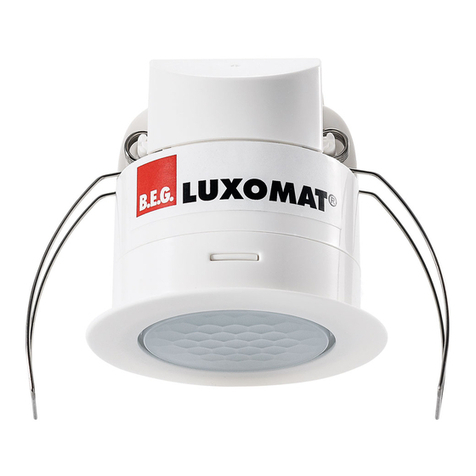
B.E.G.
B.E.G. LUXOMAT net PD11-KNX-FLAT-ST Mounting instructions
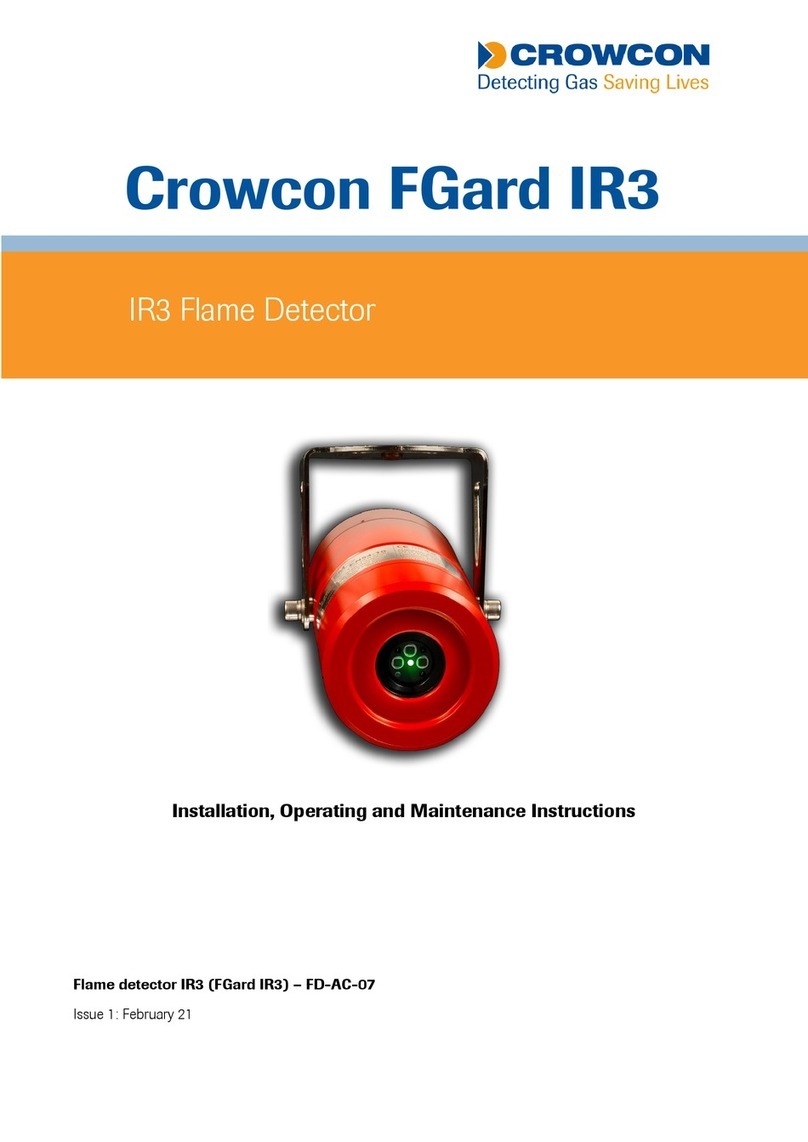
Crowcon
Crowcon FGard IR3 Installation, Operating and Maintenance Instruction
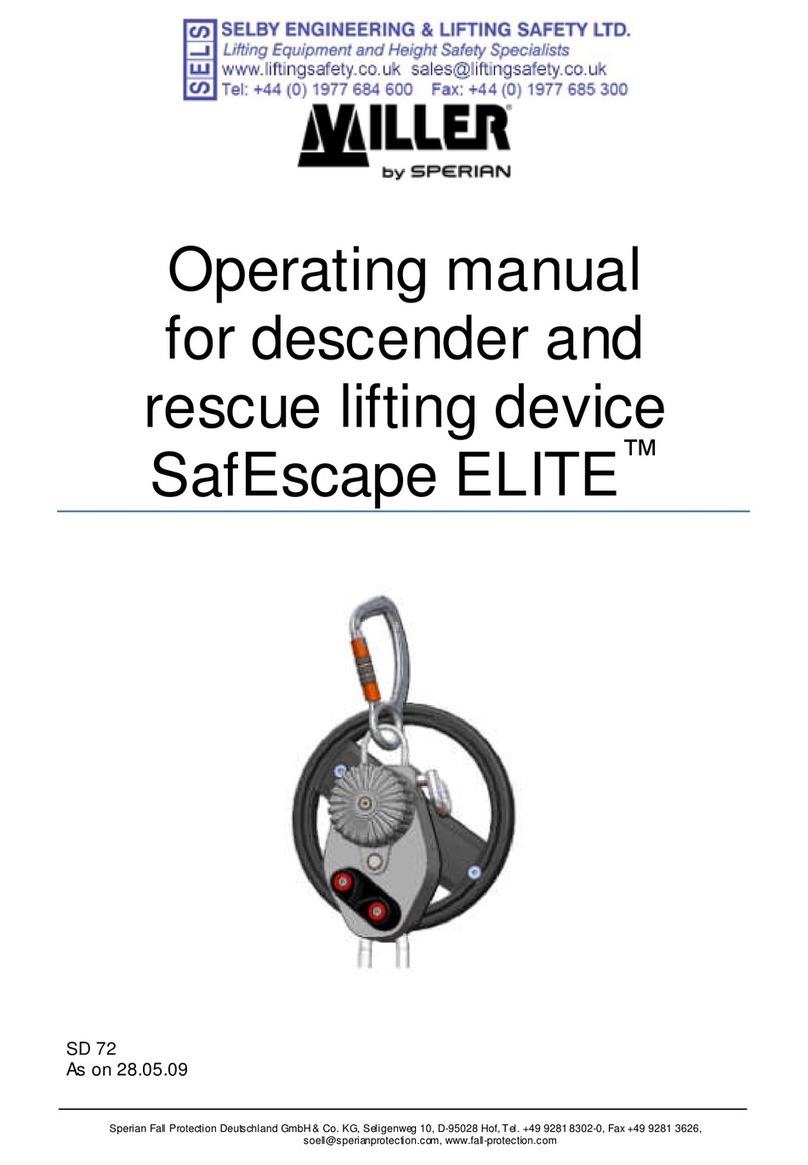
Sperian
Sperian Miller SafEscape ELITE operating manual
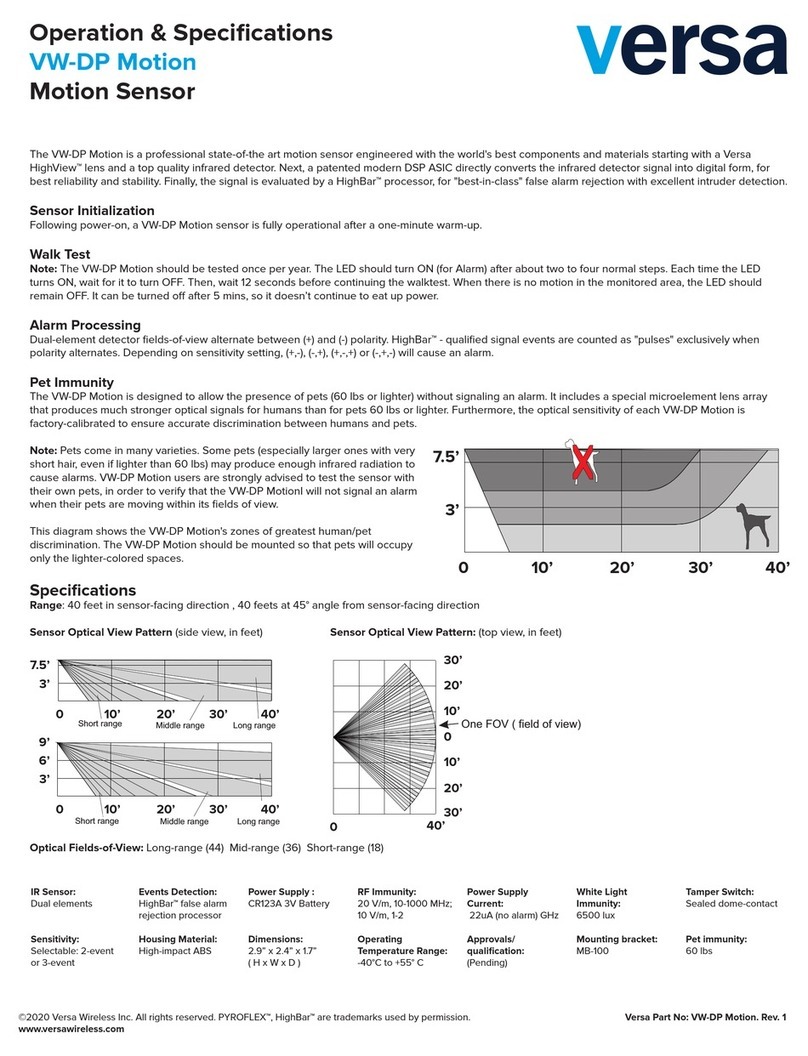
versa
versa VW-DP Motion Operation & Specifications
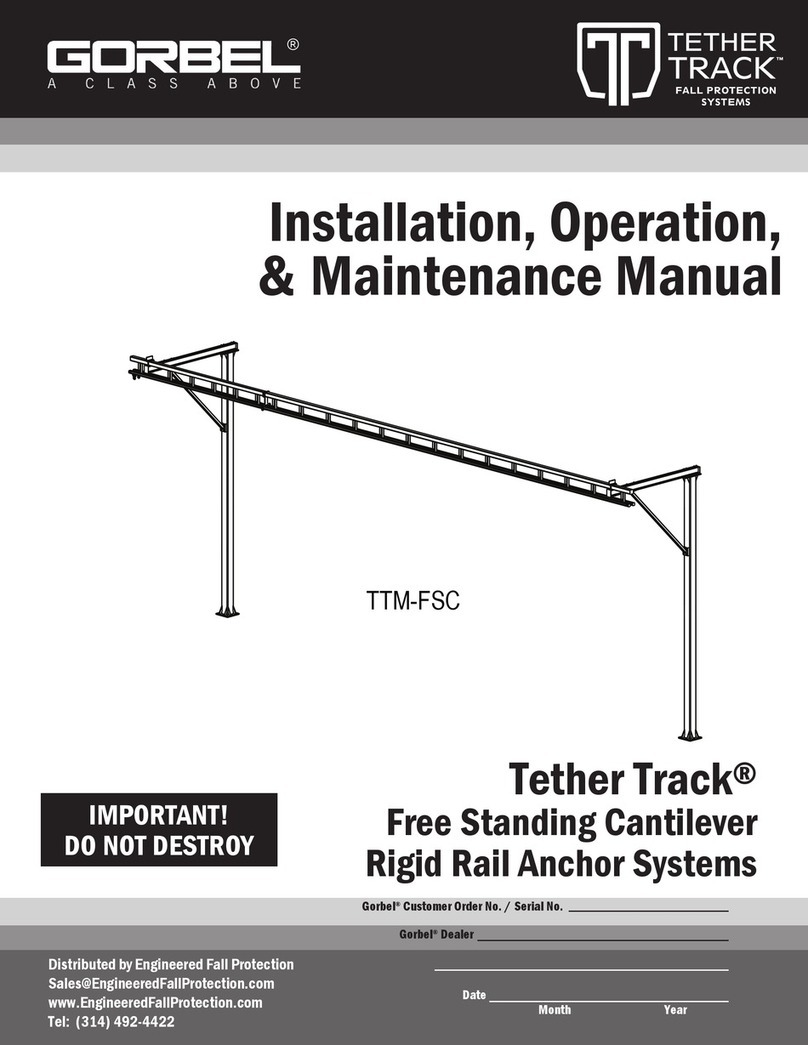
GORBEL
GORBEL Tether Track TTM-FSC Installation, operation & maintenance manual
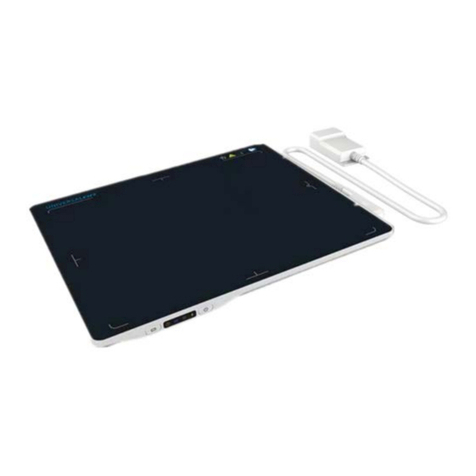
iRay Technology
iRay Technology VENU1012V user manual

